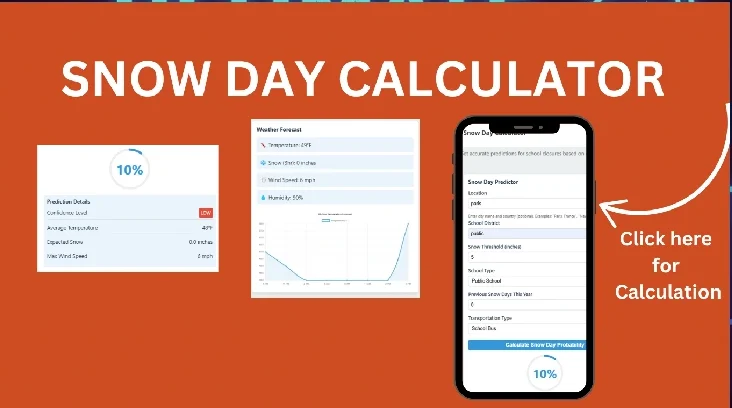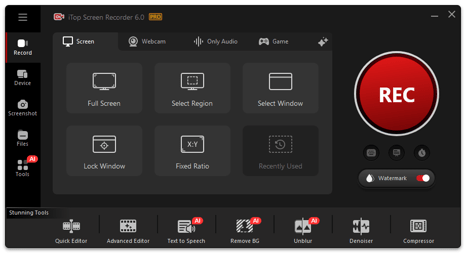
If you’ve ever woken up to white skies and wondered, “Will school be canceled today?” then you’ve probably heard of a snow day calculator. It’s a clever online tool that predicts the chances of your school being closed due to snow. All you have to do is enter your ZIP or postal code, your school type, and sometimes how many snow days you’ve already had this year. In seconds, it gives you a percentage chance of a snow day tomorrow.
Let’s break down how this fascinating tool works, how accurate it really is, and how you can use it to plan ahead this winter.
What Is a Snow Day Calculator?
A snow day calculator is an online predictor that estimates the likelihood of school closures caused by winter weather. It’s designed for students, parents, and teachers who want to know if the next day might be a surprise holiday.
Originally created for fun, these calculators quickly gained popularity among students eager to find out their odds of a day off. Over time, developers enhanced them using real weather data and historical patterns from different regions. Now, they serve both as entertainment and as a helpful planning tool for families and schools.
The concept is simple: the calculator uses weather forecasts, temperature, snowfall predictions, and past school closure data to estimate the probability of a snow day. It’s not official, but it’s surprisingly close to real results most of the time.
How Does the Snow Day Calculator Predict a Snow Day?
The snow day calculator doesn’t just guess randomly. It combines real-world weather data, algorithms, and regional behavior patterns. Here’s what goes on behind the scenes.
1. Your Location (ZIP or Postal Code)
Your location determines local weather forecasts, snowfall history, and how your area typically reacts to snow. For example, schools in snowy northern states need heavier snowfall to close, while southern regions may cancel for just a few inches.
2. School Type
Different schools respond differently to bad weather. Public schools with long bus routes often close sooner than private or urban schools that can handle snow better.
3. Number of Snow Days Already Used
Some versions of the calculator ask how many snow days your district has already taken this year. If a district has already used its limit, it might be less likely to cancel again unless the storm is severe.
4. Weather and Road Conditions
The calculator considers forecasted snowfall amounts, temperature, wind speed, and storm timing. It also factors in whether the snow will fall overnight or during the school day, since morning storms create more transportation challenges.
5. Regional Preparedness
In areas with strong snow-removal infrastructure, it takes more extreme conditions to trigger closures. Rural areas or those less equipped for winter storms tend to close more easily.
6. Historical Behavior
The tool uses data from previous years to see how districts have reacted under similar conditions. For example, if a certain district closes 80% of the time when snowfall exceeds 6 inches, that pattern is built into the prediction.
How Accurate Is a Snow Day Calculator?
The accuracy of a snow day calculator can range from fairly reliable to purely entertaining, depending on the version and the data it uses.
Some calculators claim accuracy rates around 80–90% for short-term predictions. They perform best within 24 hours of a storm since weather forecasts are more reliable at that range. However, there are limitations.
1. Forecast Changes
Weather is unpredictable. A storm expected to bring six inches of snow might shift paths or weaken overnight, completely changing the situation.
2. Different District Policies
Each school district has its own rules for closing. Some may stay open despite heavy snow if buses and roads are clear, while others cancel early for safety reasons. The calculator can’t predict these unique decisions perfectly.
3. Non-Weather Factors
Things like power outages, building heating problems, or staff shortages can also influence closures. These aren’t things the algorithm can measure.
4. Interpreting the Percentage
If the calculator shows a 70% chance of a snow day, that means there’s still a 30% chance school will stay open. It’s a probability, not a promise.
How to Use a Snow Day Calculator Effectively
The tool is simple, but getting the most from it requires knowing how to interpret its results wisely.
Step-by-Step Guide
-
Visit a snow day calculator online.
-
Enter your ZIP or postal code.
-
Select your school type (public, private, or other).
-
Enter the number of snow days used this year (if required).
-
Review the prediction — usually displayed as a percentage chance.
Tips for Smart Use
-
Check multiple times. Forecasts can change quickly, so refresh your prediction a few hours before bedtime or early in the morning.
-
Combine with local weather forecasts. Use official meteorological updates for more accurate planning.
-
Use it as a guide, not a guarantee. Treat it as an early heads-up, not a confirmation.
-
Prepare for both outcomes. Have a plan in case school is open and enjoy the bonus sleep if it’s closed.
-
Check your district’s announcements. Only official school or district messages can confirm closures.
When a Snow Day Calculator Is Useful and When It’s Not
Snow day calculators can be surprisingly practical. Parents use them to plan childcare, adjust work schedules, or prepare for remote learning. Students use them for the excitement of checking their chances and setting their hopes for a cozy day at home.
However, these calculators aren’t perfect. They don’t replace local news, district notifications, or real-time road reports. Use them for guidance, but always rely on official channels for final decisions.
Best times to use it:
-
The night before a forecasted storm
-
When planning travel or appointments during winter weather
-
To help teachers prepare remote lessons in advance
Times to take it with caution:
-
When the forecast is still uncertain or days away
-
When your school rarely closes, even in heavy snow
-
When temperature and snowfall are borderline conditions
Benefits of Using a Snow Day Calculator
-
Quick insight: Get an instant idea of closure likelihood without waiting for news.
-
Better planning: Parents can arrange childcare or remote work early.
-
Student excitement: Adds fun and anticipation to winter weather.
-
Educational value: Helps students understand probability, weather, and decision-making.
Limitations to Remember
While snow day calculators can be accurate, they’re not official. Always verify through your district’s channels. Relying solely on them can lead to confusion or disappointment.
Remember a 90% chance is not 100%. The final call always lies with your local school board or superintendent, based on conditions that morning.
Snow Day Calculator vs. Weather Forecast
Although both deal with weather, they serve different purposes:
| Feature | Snow Day Calculator | Weather Forecast |
|---|---|---|
| Purpose | Predicts school closure probability | Predicts actual weather patterns |
| Data Source | Combines forecasts with school behavior data | Meteorological models and sensors |
| Audience | Students, parents, teachers | General public |
| Accuracy | Depends on district behavior and regional trends | Generally high for short-term weather |
| Usefulness | Fun and practical for school planning | Essential for safety and travel decisions |
Using both together gives the most reliable picture — one tells you what’s likely, and the other tells you what’s happening.
Frequently Asked Questions
1. Does the snow day calculator guarantee a closure?
No, it only provides a probability. The final decision depends on your school district’s assessment of weather and safety conditions.
2. How far in advance can it predict a snow day?
It’s most accurate within 24 to 48 hours before a storm. Forecasts beyond that tend to be less reliable.
3. Can it predict delays or early dismissals?
Most calculators focus on full-day closures. Some might mention delays, but the accuracy is lower for partial adjustments.
4. Why did the calculator show a high chance, but school stayed open?
Because closure decisions involve many variables — including road crews, bus readiness, and administrative judgment — not all of which can be predicted.
5. Does it work outside the United States or Canada?
Most calculators are designed for these regions only, since they rely on regional weather models and school behavior data.
6. Can colleges use a snow day calculator?
Some tools offer options for universities, but results vary. Colleges often have different policies since students usually live on campus.
Final Thoughts
A snow day calculator is a fun, practical, and educational tool that gives you a quick snapshot of whether winter weather might cancel school. It combines real weather data with local trends to provide a probability score not a guarantee, but a helpful forecast.
For parents, it means time to plan. For students, it brings excitement. For teachers, it’s an early signal to prepare remote lessons or safety plans.
Still, remember the golden rule: always confirm with official school announcements. Use the calculator as your early warning system, not your final answer.
So, the next time the snow starts falling and you’re hoping for that magical text saying “school closed,” check the snow day calculator just don’t forget to set your alarm anyway.


